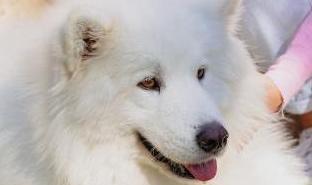
Kādi ir artrīta cēloņi un simptomi suņiem?
Artrīts ir stāvoklis, kas ietekmē suņus tāpat kā cilvēkus. Vienīgā atšķirība ir tā, ka atšķirībā no mums, cilvēkiem, mūsu pūkainajiem draugiem ir grūti mums paziņot par savu diskomfortu. Sāpju uzvedība bieži tiek nepareizi uztverta kā vispārējas uzvedības izmaiņas. Tāpēc stāvoklis bieži paliek nepamanīts, līdz tas ir progresējis daudz smagākā stadijā.
The solution? Keep an eye out for signs and catch them early.
To help, we’ve listed some of the most common causes of arthritis in dogs, the signs and symptoms to look out for, and what you can do to help your pet.
- What causes arthritis in dogs?
- Arthritis signs and symptoms in dogs
- How to treat arthritis in dogs
- How to keep your dog’s joints healthy
- FAQs
Osteoarthritis is the most common form of arthritis in dogs. And while the real causes of osteoarthritis are still uncertain, some predisposition factors (like the ones listed below) are now clearly associated with the disease.
Age: The protective cartilage between bones tends to wear off with age, which is why mobility troubles are more common in older dogs.
Breed: Large breed dogs like German Shepherds, Labradors, Retrievers, Siberian Huskies and Rottweilers are more likely to be affected by arthritis than smaller dogs.
Genetics: Research has shown that there is a strong relationship between joint disorders and certain genes involved in growth and musculoskeletal development.
Injury: Dogs that have suffered from injuries like fractures or ligament tears are also more likely to develop osteoarthritis at a later stage.
Hip dysplasia: This deformity of the joints is often hereditary and can lead to arthritis.
Obesity: A high body weight means more load on the joints.
The initial signs of arthritis in dogs can be subtle, so it’s important to pay careful attention to any changes in behaviour. Here are the most common symptoms to watch out for:
- Reluctance to move or play
- Difficulty getting up and about
- Limping or lameness
- Irritability and other changes in behaviour
- Tiredness
- Increased licking and biting
- Sensitivity to touch
- Muscle wastage
It's important to note that many of these signs could also be indicative of other conditions – that’s why it’s important to let your vet make the final assessment.
Getting the lead out or throwing a ball may not have the same effect on your dog as it once did. Or they may choose to walk beside you at a slow pace rather than run around when you take them outdoors.
Dogs with arthritis may find it hard to get up, particularly after long periods of rest. You may notice that they don’t rush to greet you or guests at the door. Similarly, they may avoid climbing up staircases or even climbing up a sofa or bed.
If you notice your dog limping or walking in an unusual manner (when limping involves more than one leg or ‘hopping’), this could be a sign of pain or stiffness. This may be especially obvious during cold weather, when aches and pains get worse.
Dogs with arthritis may lick and bite certain areas of their bodies that hurt. It’s their way of trying to ease the pain.
Keep an eye out for signs of flinching or groaning when you pet your dog. Even the most affectionate dogs will seem reluctant to be petted when they’re in pain.
When arthritis gets worse over time, dogs may begin to lose muscle. You may spot visible muscle wastage (e.g., one leg looking thinner than the other) if your dog is not using certain muscles as much. This means they will find it harder to get up after lying down for a while. So, they may spend more time resting on the floor or sleeping, which could cause gain weight.
Pain can cause changes in behaviour in dogs, just as it does in humans. They may act anxious, grumpy, irritable, or withdrawn, and may not want to go for a walk.
The first step is to seek advice from your vet as soon as you notice any sign that suggests your dog is in pain. You want to do this before the pain becomes severe.
The vet will create a treatment plan that’s best suited to your dog’s condition.
There are many simple steps you can take at home to keep your pet’s joints strong and healthy. These include regular exercise, weight management and dietary supplements that promote joint health. Talk to your vet about what the best options are for your pet.
Risk Factors for Canine Osteoarthritis and Its Predisposing Arthropathies
Canine Osteoarthritis and Treatments: A Review
Prevalence, duration and risk factors for appendicular osteoarthritis
Veterinārārsti parasti veic fizisku pārbaudi, lai pārbaudītu locītavu pietūkumu vai sāpes. Viņi ņems vērā arī jūsu suņa simptomu vēsturi. Var būt nepieciešamas arī asins analīzes, rentgena vai citi izmeklējumi.
- Kādā vecumā suņiem parādās artrīta pazīmes?
Artrīts var skart suni jebkurā vecumā, bet parasti tas attīstās vecākiem suņiem. Apmēram 50% diagnosticēto suņu parasti ir vecumā no 8 līdz 13 gadiem. Bet tas varētu arī nozīmēt, ka slimība tiek atklāta tikai kad suņi kļūst vecāki.
- Kas izraisa artrīta saasinājumu suņiem?
Jebkura locītavu slodze var izraisīt saasinājumu. Aukstais laiks un svara pieaugums arī rada lielāku spiedienu uz locītavām, kas var izraisīt osteoartrīta simptomus.


